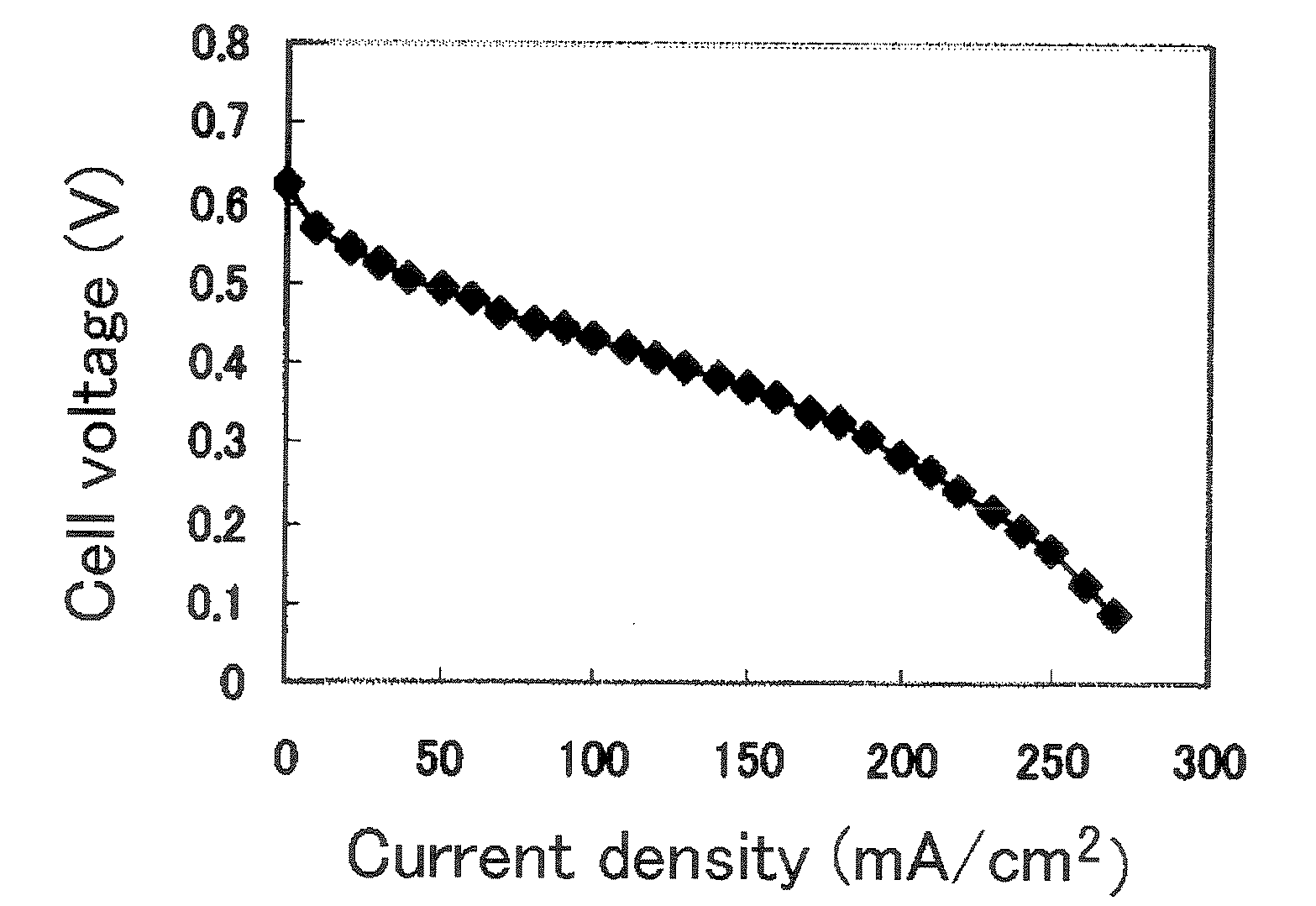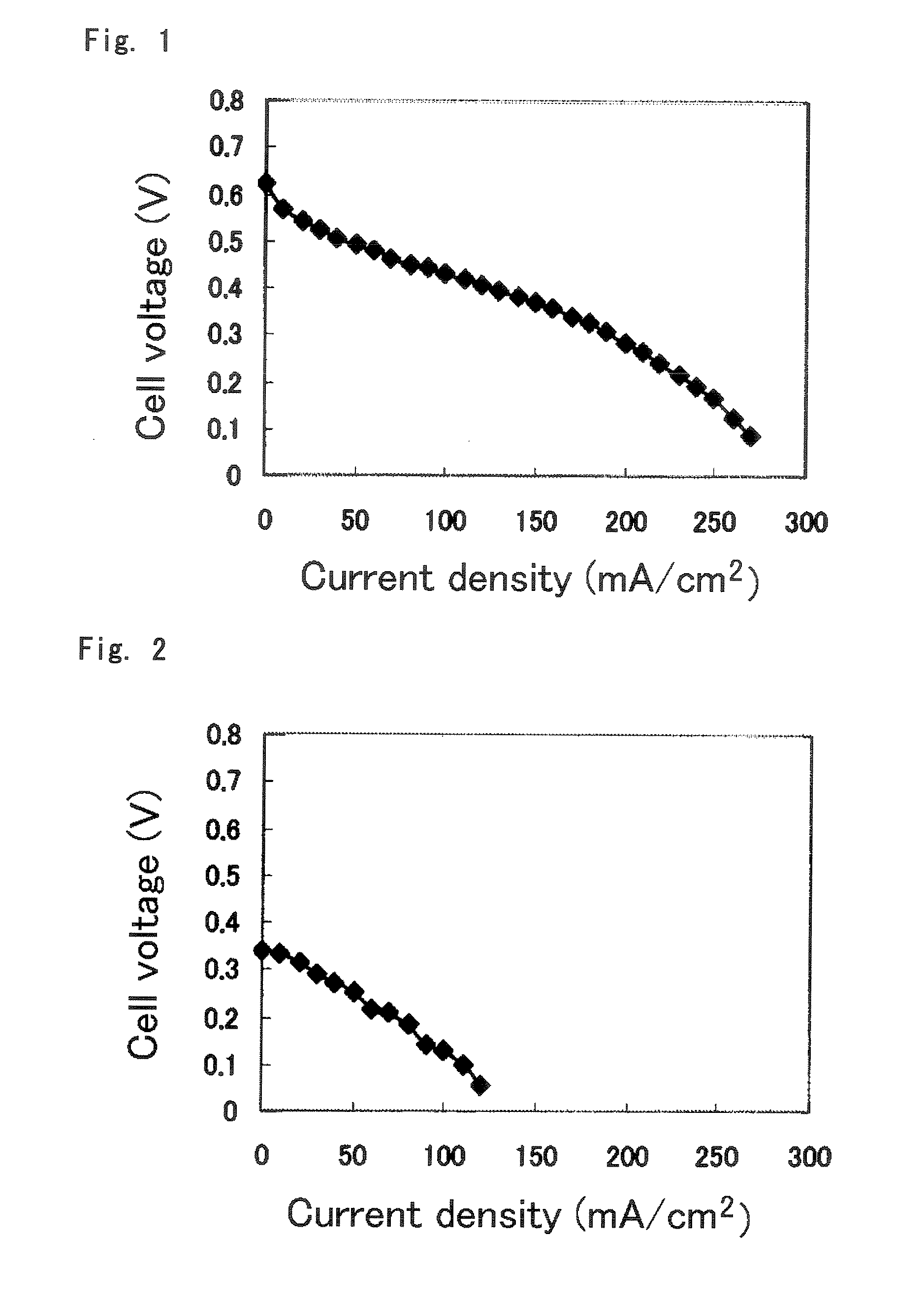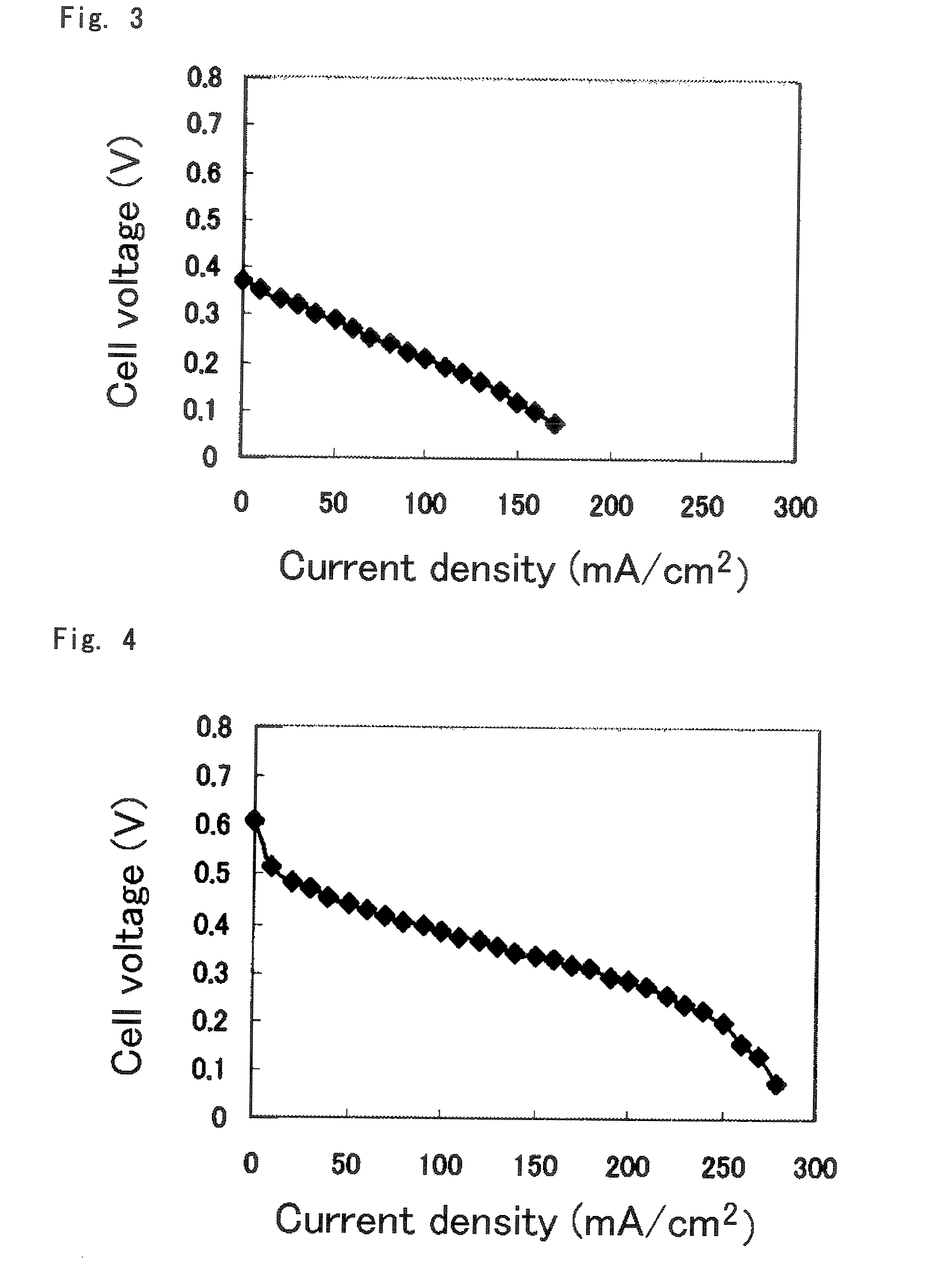Polymer Electrolyte Membrane For Solid Polymer Fuel Cell, Membrane-Electrode Assembly And Fuel Cell
a polymer electrolyte and fuel cell technology, applied in the direction of cell components, non-metal conductors, sustainable manufacturing/processing, etc., can solve the problems of insufficient performance of the fuel cell derived therefrom, insufficient oxidation stability, and insufficient etc., to achieve the effect of high tensile strength, high tensile strength and high tensile strength of the polymer electrolyte membran
- Summary
- Abstract
- Description
- Claims
- Application Information
AI Technical Summary
Benefits of technology
Problems solved by technology
Method used
Image
Examples
referential example 1
Production of a Block Copolymer Composed of Poly (α-methylstyrene) (Polymer Block (A)) and Hydrogenated Polybutadiene (Polymer Block (B)
[0108]In a similar process to a previously reported process (WO 02 / 40611), a poly (α-methylstyrene)-b-polybutadiene-poly (α-methylstyrene) triblock copolymer (hereinafter abbreviated as mSEBmS) was synthesized. The number average molecular weight (GPC measurement, in terms of polystyrene) of the resulting mSEBmS was 76,000, and the amount of the 1,4-bond determined by 1H-NMR measurement was 55% and the content of the α-methylstyrene unit also determined by the 1H-NMR measurement was 30.0% by mass. Further, it was revealed by composition analysis through 1H-NMR spectrum measurement that α-methylstyrene was not substantially copolymerized into the polybutadiene block.
[0109]A solution of the synthesized mSEBmS in cyclohexane was prepared, the solution was put in a pressure proof vessel whose atmosphere had sufficiently been replaced with nitrogen, and ...
referential example 2
Production of a Block Copolymer Composed of Poly (α-methylstyrene) (Polymer Block (A)) and Hydrogenated Polybutadiene (Polymer Block (B))(HmSEBmS)
[0110]An mSEBmS having a number average molecular weight of 51,300, a 1,4-bond amount of 59.2% and an α-methylstyrene unit content of 31.3% by mass was synthesized in a similar way as in Referential example 1. α-methylstyrene was not substantially copolymerized into the polybutadiene block. Similar operations as in Referential example 1 were made except to use this mSEBmS to obtain an HmSEBmS with a hydrogenation proportion of 99.4%.
referential example 3
Production of a Block Copolymer Composed of Poly (α-methylstyrene) (Polymer Block (A)) and Hydrogenated Polybutadiene (Polymer Block (B))(HmSEBmS)
[0111]An mSEBmS having a number average molecular weight of 74,700, a 1,4-bond amount of 39.5% and an α-methylstyrene unit content of 42.0% by mass was synthesized in a similar way as in Referential example 1. α-methylstyrene was not substantially copolymerized into the polybutadiene block. Similar operations as in Referential example 1 were made except that hydrogenation reaction was conducted at 50° C. for 7 hours, whereby an HmSEBmS with a hydrogenation proportion of 99.4% was obtained.
PUM
| Property | Measurement | Unit |
|---|---|---|
| softening point | aaaaa | aaaaa |
| softening point | aaaaa | aaaaa |
| softening point | aaaaa | aaaaa |
Abstract
Description
Claims
Application Information
 Login to View More
Login to View More - R&D
- Intellectual Property
- Life Sciences
- Materials
- Tech Scout
- Unparalleled Data Quality
- Higher Quality Content
- 60% Fewer Hallucinations
Browse by: Latest US Patents, China's latest patents, Technical Efficacy Thesaurus, Application Domain, Technology Topic, Popular Technical Reports.
© 2025 PatSnap. All rights reserved.Legal|Privacy policy|Modern Slavery Act Transparency Statement|Sitemap|About US| Contact US: help@patsnap.com



